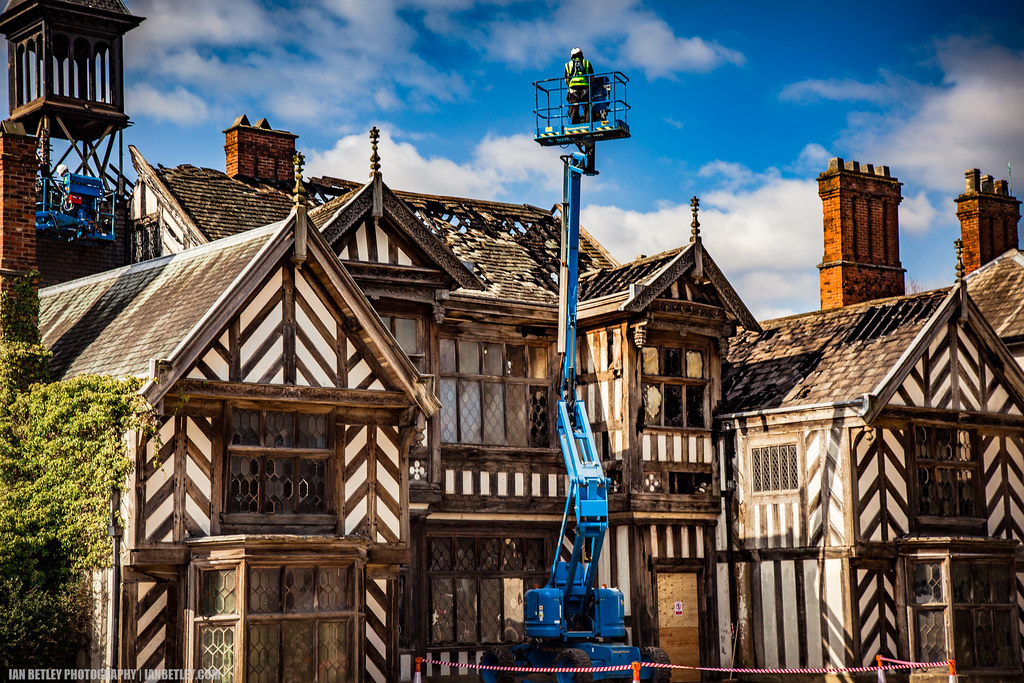
Have you ever wondered about places that seem to defy time, holding onto their rich heritage while constantly evolving? There are some cities that just have that special spark, an almost magical quality that makes them endlessly fascinating. Today, we’re taking a delightful dive into one such marvel, a vibrant German city whose ‘ageless secrets’ are simply waiting to be uncovered.
Nestled in the heart of Saxony-Anhalt, Halle (Saale) isn’t just a dot on the map; it’s a living tapestry woven with centuries of history, culture, and innovation. Far from being an ordinary locale, this city has quietly shaped significant historical movements, nurtured brilliant minds, and stood as a testament to human ingenuity and perseverance.
Get ready to explore the compelling narratives and surprising facets that contribute to Halle’s remarkable, timeless allure. From its very foundations rooted in precious resources to its towering architectural achievements and its profound influence on education and the arts, we’re peeling back the layers to reveal what makes Halle truly unforgettable.
1. **Its Ancient Roots and Salt-Powered Genesis**
The name “Halle” itself whispers tales of its earliest fortunes, deeply connected with the harvesting of salt. In fact, the river Saale, upon which the city proudly stands, contains the Germanic root for salt, a clear indicator of its ancient significance. This isn’t just a linguistic curiosity; it points to the very lifeblood of the city’s early economy.
Salt harvesting has been a defining feature of Halle for millennia, dating back at least to the Bronze Age, from 2300 to 600 BC. Imagine communities thriving on this precious commodity, a testament to the ingenuity and resourcefulness of its earliest inhabitants. This deep historical connection to “white gold” isn’t merely a footnote; it’s fundamental to Halle’s identity and development.
The earliest documented mention of Halle dates all the way back to AD 806, providing a concrete timestamp for its long and storied existence. Located in the south of Saxony-Anhalt, in the Leipzig Bay, Halle is not only the largest city on the River Saale but also benefits from its strategic position, a natural advantage that has propelled its growth through the ages. The White Elster, another significant waterway, gracefully flows into the Saale in the southern borough of Silberhöhe, further enhancing the region’s geographical importance.
This ancient connection to salt and waterways illustrates Halle’s intrinsic value long before it became a bustling modern center. It underscores how geographical blessings and natural resources have historically paved the way for communities to flourish, setting the stage for the vibrant city we know today. It’s a truly fascinating look at how deeply embedded the past is in the present.
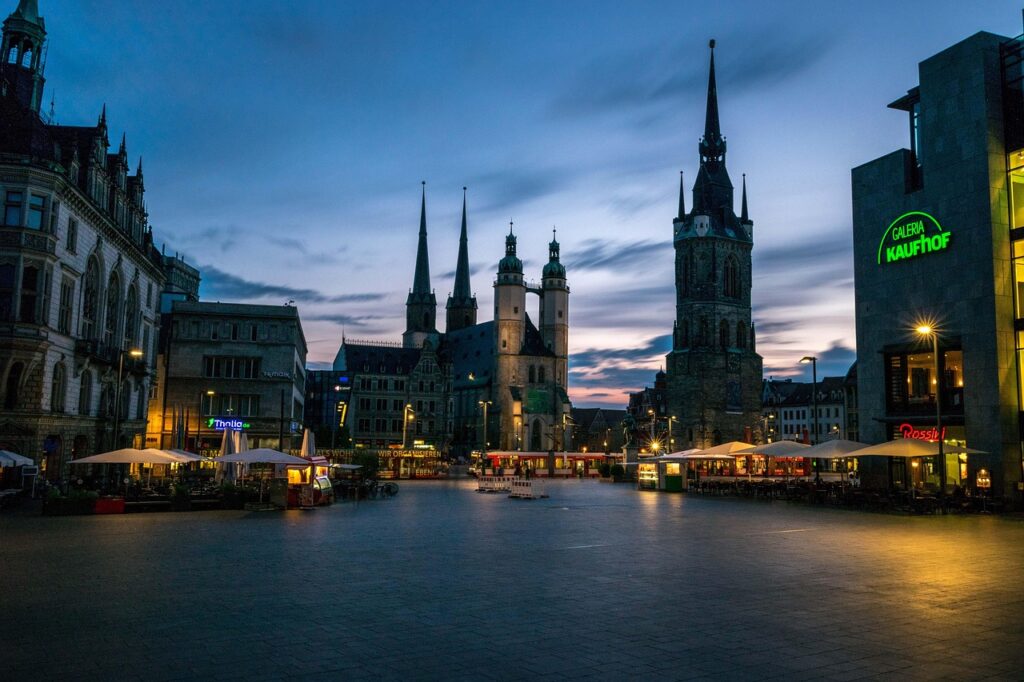
2. **A Hub of Reformation and Pietism**
Fast forward to the 16th century, and Halle emerges as an important location for Martin Luther’s Reformation. This wasn’t just a theological shift; it was a societal earthquake that reshaped regions across Germany. Halle played a pivotal role in this transformative movement, showcasing its early significance in intellectual and spiritual discourse.
During this period, Cardinal Albert of Mainz, who served as Archbishop of Magdeburg from 1513 to 1545, also left an indelible mark on the town. His influence, alongside the broader currents of the Reformation, highlights Halle’s position at the crossroads of religious and political power struggles. The city was not just a passive observer but an active participant in these defining moments.
By the 18th century, Halle became a vibrant center for Pietism, a significant religious movement that emphasized personal devotion and social reform. This movement was actively encouraged by King Frederick William I of Prussia, who reigned from 1713 to 1740. He saw Pietism as a way to encourage the area’s large Lutheran population to align more closely with his own Calvinist faith, fostering both religious and political loyalty to the Prussian crown.
The impact of Pietism in Halle extended far beyond religious doctrine. By the 1740s, the city had established numerous orphanages and schools for the wealthy, all designed in the sober style that Pietism advocated. Remarkably, this “Halle education” is credited as the first instance where the “modern education” system was established, emphasizing a structured and purposeful approach to learning. The Halle Pietists were also at the forefront of combating poverty, showcasing a holistic approach to community well-being that was truly ahead of its time.
3. **Enduring Educational Excellence**
Halle’s commitment to knowledge and intellectual growth is one of its most impressive and enduring features. The Martin Luther University of Halle-Wittenberg, with campuses in both Halle and Wittenberg, stands as the largest university in Saxony-Anhalt and proudly ranks among Germany’s oldest universities. Its long-standing tradition of academic rigor continues to attract students and scholars alike, making it a cornerstone of the region’s intellectual life.
Complementing its academic prowess, Halle is also home to the Universitätsklinikum Halle (Saale), the largest hospital in the state. This vital institution not only serves the health needs of a vast population but also plays a crucial role in medical education and research, closely integrated with the university’s medical school, which was established by the esteemed physician Friedrich Hoffmann. It’s a beacon of healing and learning.
The city’s scientific legacy is further solidified by the German National Academy of Sciences (Leopoldina), which has its distinguished seat in Halle. This academy is renowned as the oldest and one of the most respected scientific societies in Germany, a testament to Halle’s deep-rooted commitment to advancing knowledge across various disciplines. Its presence here speaks volumes about the city’s intellectual gravitas.
Moreover, the university’s botanical garden, the Botanische Garten der Martin-Luther-Universität Halle-Wittenberg, founded in 1698, is another gem. Beyond its local significance, Halle played a crucial role in establishing the Lutheran church in North America. Figures like Henry Muhlenberg, often called the first Patriarch of the Lutheran Church in America, and his son Frederick Muhlenberg, the first Speaker of the United States House of Representatives, were both graduates of Halle University, illustrating its far-reaching global impact.
Read more about: The Echoes of Giants: How Enduring Literature Navigates a Fragmented World and a Shifting Cultural Landscape

4. **Cultural Riches and Artistic Legacy**
One cannot speak of Halle’s cultural fabric without immediately thinking of George Frideric Handel, the German-British Baroque composer who was born here in 1685. He spent the first 17 years of his life in the city, and his birthplace, the Handel House, has been beautifully converted into a music museum since 1948, preserving his legacy. To honor his timeless music, Halle has proudly staged a Handel Festival annually in June since 1952, drawing admirers from all corners.
Halle also served as a vibrant scene for German Romanticism, attracting a constellation of literary giants such as Heine, Eichendorff, Schleiermacher, Tieck, and Novalis. Johann Wolfgang von Goethe, another titan of German literature, was a regular and welcome guest at the home of his close friend, the composer and writer Johann Friedrich Reichardt. This rich literary tapestry speaks to Halle’s stimulating intellectual and creative environment during a pivotal artistic era.
The city’s artistic heritage extends to the visual arts, notably through the work of German-American expressionist painter Lyonel Feininger. Invited by the city, Feininger worked in Halle from 1929 to 1931, creating his famous “Halle Cycle,” a series of eleven views of the city. Among these, “Die Türme über der Stadt” (The towers above the city), painted in 1931, is particularly celebrated and even featured on a German stamp.
Further enriching its cultural landscape is the Stadtsingechor zu Halle, housed within the Francke Foundations. Founded before the year 1116, this esteemed institution is recognized as one of the oldest boys’ choirs in the world, carrying on a tradition of musical excellence that spans nearly a millennium. Halle is truly a city where history sings and art flourishes, leaving an indelible mark on global culture.
Read more about: Beyond Horror: An In-Depth Look at Stephen King’s Unexpected Top 10 Films of All Time
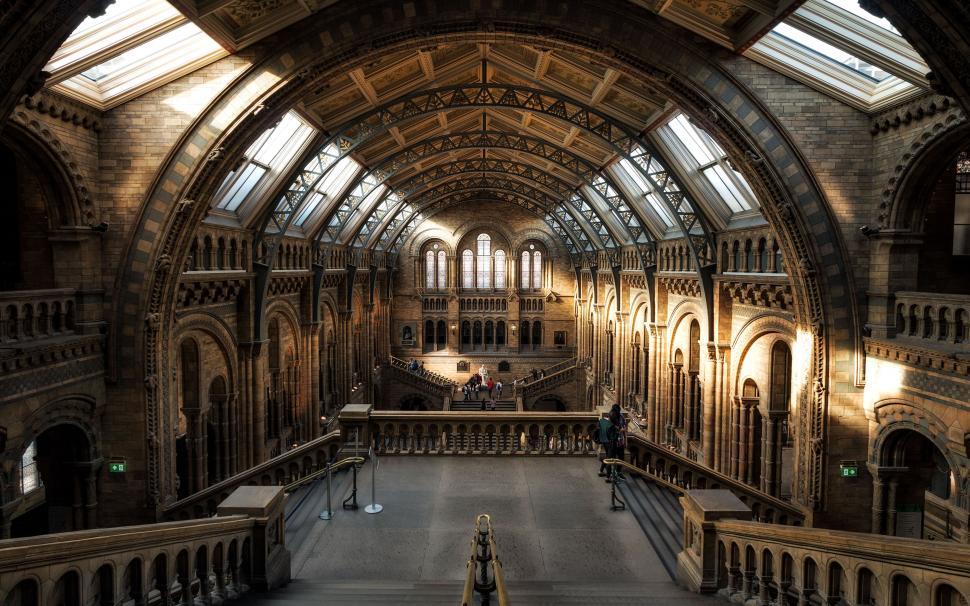
5. **Architectural Grandeur and Historic Landmarks**
Halle’s skyline is a magnificent testament to its architectural grandeur, proudly displaying centuries of history in stone and brick. The Market Church of St. Mary (Marktkirche), built between 1529 and 1554, is a true masterpiece, ingeniously incorporating elements from two medieval churches, St. Gertrude’s (11th century) and the older St. Mary’s (12th century). Its four steeples are iconic, with the two western octagonal ones famously known as the Blue Towers due to their distinctive dark blue slate roofing.
The other two steeples, the Hausmannstürme, are connected by a bridge that once served as the city’s fire watch—a practical and elegant solution to civic safety. Inside this venerable church, visitors can find the original death-mask of Martin Luther, a deeply significant historical artifact. The Marktkirche’s four towers, alongside the Red Tower, are undeniably a landmark symbol of the city, instantly recognizable and deeply cherished.
Speaking of the Red Tower (Roter Turm), originally constructed between 1418 and 1503 as the campanile of the older St. Mary’s Church, it stands as another prominent landmark. Together with the steeples of the Market Church, these five towers collectively define Halle’s distinctive and beautiful skyline, making it truly unique. Though damaged during World War II, its enduring presence is a symbol of the city’s resilience.
Beyond the market square, the Moritzburg, a newer castle built between 1484 and 1503, served as the residence of the Archbishops of Magdeburg. Although largely ruined in the Thirty Years’ War, it has been partially reconstructed and now serves as a dynamic art gallery, with new exhibition rooms designed by Spanish architects Sobejano and Nieto opening in 2010. Further north, Giebichenstein Castle, first mentioned in 961, stands majestically on a hill above the Saale river, housing a museum and the Burg Giebichenstein University of Art and Design in its lower castle, blending ancient history with contemporary creativity.
Read more about: John Travolta’s $10 Million Aviation Oasis: Unveiling the Celebrity Dream Home with a Private Airport He Built with His Late Wife

6. **Guardian of Prehistoric Treasures**
Halle proudly holds its place as a guardian of truly ancient history, thanks to the State Museum of Prehistory. This institution is a treasure trove, preserving artifacts that shed light on humanity’s earliest chapters. It’s here that one can connect with distant ancestors and marvel at their sophistication.
The crowning glory of the State Museum of Prehistory is undoubtedly the Nebra sky disk. Discovered in Nebra in the Unstrut valley, nestled between Halle and Erfurt, this Bronze Age find is not just an artifact; it’s a profound piece of astronomical significance. Its intricate design and advanced understanding of celestial bodies make it a world-renowned exhibit and a point of immense pride for Halle.
The region surrounding Halle also offers glimpses into the Neolithic period, demonstrating human presence and activity thousands of years ago. A notable example is Bischofs Wiese within the Dölauer Heide forest, which contains 35 graves dating back to approximately 2500–2000 BC. These sites provide invaluable insights into early human societies, their rituals, and their lives.
These prehistoric connections remind us that Halle’s story stretches back far beyond documented mentions, into the very dawn of civilization. It’s a city built on layers of time, where the whispers of ancient cultures are preserved and presented for all to learn from and admire. This commitment to safeguarding such profound historical treasures is indeed one of Halle’s most fascinating ageless secrets.
Read more about: Archaeologists Uncover 115,000-Year-Old Human Footprints Where They Shouldn’t Be: A Deep Dive into the Science of Discovery
7. **Industrial Legacy and Sweet Success**
Halle’s story isn’t just about ancient salt mines; it’s also a fascinating tale of industrial prowess that powered the region for centuries. The city’s earliest fortunes were indeed built on “white gold,” with salt harvesting dating back to the Bronze Age. The name “Halle” itself, and the river Saale, share Germanic roots with salt, hinting at this profound and enduring connection.
But the city’s innovative spirit didn’t stop there. The Halloren, Halle’s famous salt workers, not only harvested this precious commodity but also became a symbol of the city’s industry. Dressed in their distinctive uniforms adorned with eighteen silver buttons, these workers lent their name to one of Germany’s sweetest legacies: Halloren-Werke.
Founded in 1804, Halloren-Werke holds the impressive title of Germany’s oldest chocolate factory still in use! It’s a delightful testament to Halle’s ability to transform raw materials into cherished products. Visitors can even explore the Saline Museum to learn about the ancient craft of “Schausieden” (boiling of the brine) and view the unique Silver Treasure of the Halloren.
In the era of East Germany, Halle also emerged as a significant industrial powerhouse, particularly known for its thriving chemical industry. Giants like Buna-Werke and Leuna fueled the region’s economy, leading to the creation of Halle-Neustadt in the 1960s—a socialist model city built specifically to house the vast workforce of these factories. While much of this heavy industry has since transformed, it undeniably shaped Halle’s modern identity, leaving behind a resilient spirit and a history of robust innovation.
Read more about: JD Souther: The Unforgettable Legacy of the Songwriter Who Defined ’70s Country-Rock and Beyond
8. **Strategic Connectivity and Modern Motion**
Beyond its historical and cultural depth, Halle truly shines as a nexus of strategic connectivity, a city that keeps Central Germany moving. It’s no surprise that figures like Ludwig Wucherer, in the 19th century, made Halle an important rail hub. By 1840, the Magdeburg-Halle-Leipzig line was already open, forging a vital connection between major cities.
The city’s commitment to efficient movement extends right into its urban fabric with the Halle (Saale) tramway network. This isn’t just any tram system; it proudly boasts the world’s first major electric-powered inner-city tram line, which first opened its tracks way back in 1891. This network remains one of Germany’s most extensive today.
Halle (Saale) Hauptbahnhof serves as a major railway station, further cementing the city’s role as a central transportation point. Its prominence has only grown with the Erfurt–Leipzig/Halle high-speed railway, making Halle an intermediate stop for many crucial routes, including trains connecting Berlin and Munich. It’s about more than just local convenience; it’s about connecting entire regions.
And for those looking to travel further afield, the Leipzig/Halle International Airport, located strategically between the two conurbated cities, is a true regional asset. Opened in 1927, it has evolved into Germany’s 11th largest airport by passengers and, remarkably, Europe’s fifth-busiest in terms of cargo traffic. This incredible infrastructure highlights Halle’s enduring ability to adapt and thrive, constantly linking people and goods across Germany and beyond.
Read more about: Nightmare in the Driveway: 10 SUVs Dealers Say They Can’t Move Due to Lingering Issues
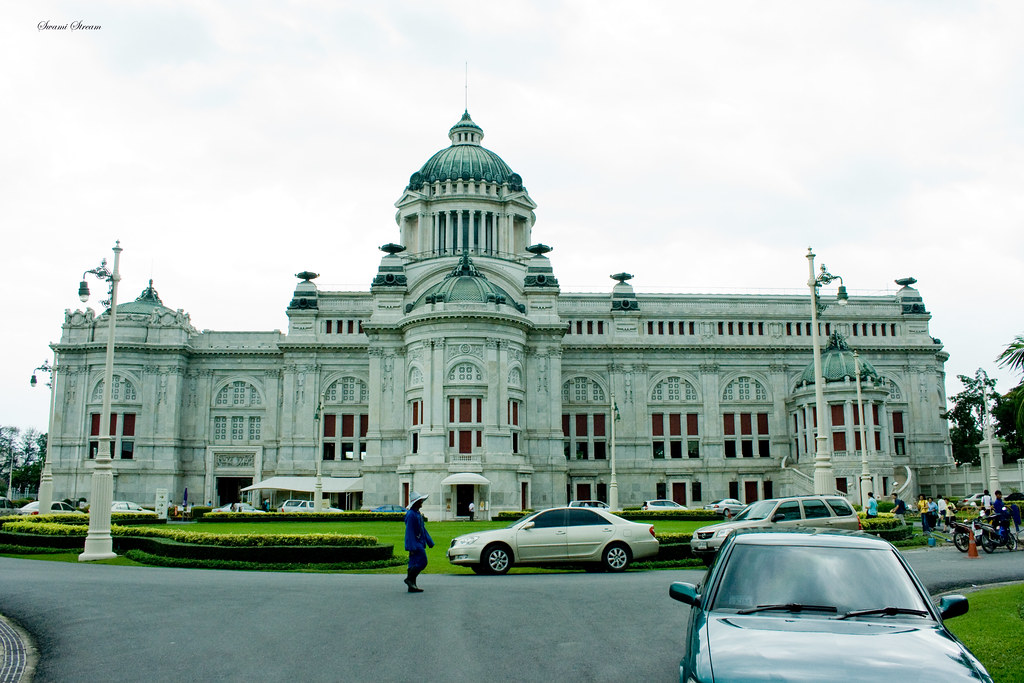
9. **Resilience, Revival, and Reimagined Spaces**
Halle’s history is not just about what was built, but also what endured and what was rebuilt, showcasing an incredible spirit of resilience. While the city famously “survived the Second World War almost unscathed” compared to many German cities, it wasn’t entirely untouched. Near the end of the war, on March 31, 1945, and again a few days later, Halle experienced bombing raids that tragically killed over 1,000 inhabitants and destroyed 3,600 buildings.
However, a pivotal moment of its resilience came on April 17, 1945, when American soldiers occupied Halle. Despite the Red Tower being set on fire by artillery, an aerial bombardment was canceled after Felix von Luckner negotiated the city’s surrender. This negotiation spared Halle from further extensive damage.
After the war, Halle continued to navigate significant changes. It briefly served as the capital of Saxony-Anhalt before becoming the capital of the administrative district of Halle within East Germany. Following German reunification in 1990, Halle faced new challenges, including a decline in its industrial base which led to a population decrease.
Yet, Halle has consistently demonstrated its capacity for renewal. The city has seen its population stabilize and even diversify, with a notable increase in its foreign population since 2015, welcoming refugees from various war-torn countries. This ebb and flow of its people and economy highlights a city that, through conflict and change, has continuously found ways to reinvent itself, preserve its heritage, and embrace new beginnings.
Read more about: Unleashing the Aquatic Titans: 14 ‘Boat Cadillacs’ that Ruled the Golden Age of Waterborne Luxury

10. **Green Escapes and Natural Wonders**
For all its historical grandeur and urban vitality, Halle also offers a breathtaking embrace of nature, proving that its “ageless secrets” include a vibrant, green heart. The city is adorned with numerous parks and gardens, each providing a serene escape or a touch of wild beauty. The Botanical Garden of the Martin Luther University of Halle-Wittenberg, founded in 1698, is a cherished public space and part of the “Garden Dreams” project.
Picture yourself strolling through Reichardts Garten, a historic English garden laid out in 1794 by Johann Friedrich Reichardt. This park was famously known as the “accommodation of Romanticism,” a place where artistic souls found inspiration. Or perhaps a leisurely afternoon on Peißnitz Island, a lush urban oasis, or a peaceful break in Pestalozzi Park, all offering opportunities to connect with the natural world.
For wildlife enthusiasts, Halle’s Zoological Garden, or Bergzoo, is a must-visit, perched on the Reilsberg hill. It’s not just a place for observation; the zoo actively contributes to the EAZA breeding program for creatures like the Angolan lion and the Malaysian tiger. You might even spot Halle’s thriving coypu population, an unexpected touch of South American wildlife thriving in the heart of Germany.
Beyond cultivated gardens, Halle is blessed with expansive natural landscapes like the Dölauer Heide forest. This ancient woodland is not only beautiful but also holds prehistoric significance, containing sites like Bischofs Wiese with 35 graves dating back to the Neolithic period. Then there are the Klausberge, porphyry hills offering panoramic views over the Saale Valley, underscoring Halle’s enduring allure where history and natural beauty intertwine seamlessly.
Read more about: Phil Mickelson’s Garage Unveiled: The Golf Legend’s High-Performance Rides and Extravagant Lifestyle
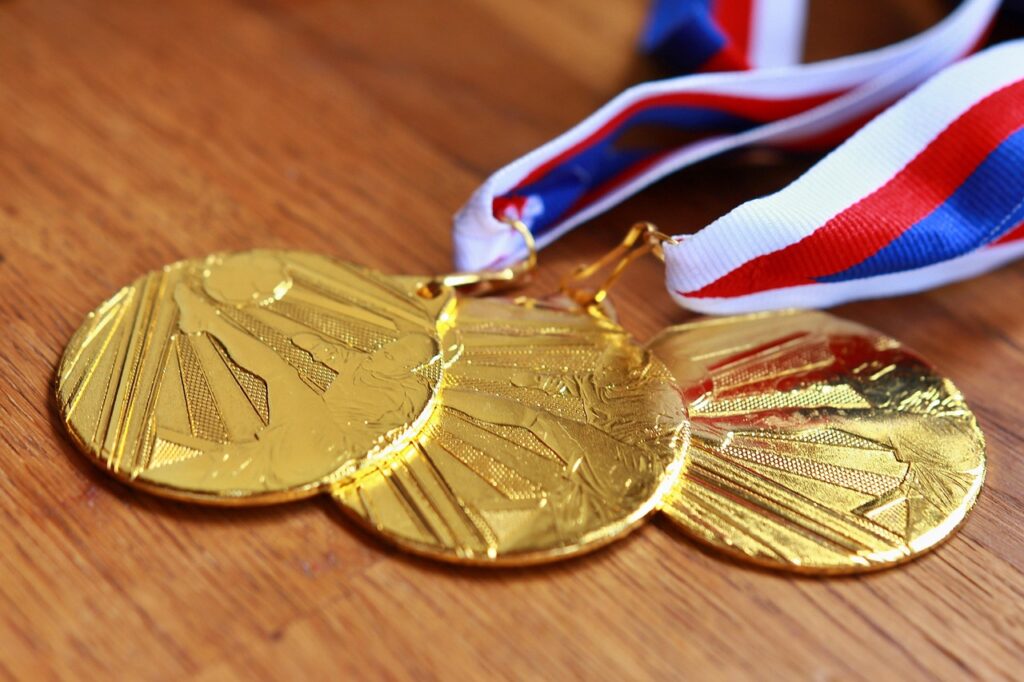
11. **Sporting Spirit and Champion Achievements**
Halle’s “ageless secret” isn’t just in its stones and stories; it’s also vibrant in the thrilling arenas of sport, demonstrating a deep-seated competitive spirit and a proud legacy of champions. Football, of course, plays a significant role. Teams like Hallescher FC Wacker 1900 had considerable regional importance before World War II, even reaching the semi-finals of the German Championship in 1921.
Following the war, successor teams continued to make their mark, with ZSG Union and BSG Turbine Halle becoming East German champions in 1949 and 1952. Later, as Chemie Halle, the club was a consistent presence in the first division of the German Democratic Republic and clinched the Cup tournament in both 1956 and 1962. Legendary 72-times international player Bernd Bransch exemplifies the city’s rich footballing tradition.
Today, Hallescher FC continues to uphold this heritage, regularly competing in the third division, keeping the passion for the beautiful game alive. The proximity of the club’s location to a train station also highlights its integral role in the community.
But Halle’s sporting achievements extend far beyond football. The general sports club SV Halle has produced an impressive roster of Olympic gold medallists and world champions. Think of swimming sensation Kornelia Ender, who scooped up four Olympic gold medals in 1976, or Andreas Hajek, a rowing powerhouse with four world championships. The club’s basketball teams, known today as the Lions, have also dominated, winning multiple men’s and women’s championships during the GDR era. Halle truly fosters a culture of excellence.
Read more about: Phil Mickelson’s Garage Unveiled: The Golf Legend’s High-Performance Rides and Extravagant Lifestyle

12. **A Pantheon of Influential Personalities**
Halle’s remarkable longevity and vibrant character are deeply rooted in the extraordinary individuals who have called it home, shaping its past, present, and future. From pioneering thinkers to artistic luminaries, the city has been a fertile ground for greatness, making its people another one of its compelling “ageless secrets.”
In public service and intellectual life, Halle boasts an impressive lineup. August Hermann Francke, a Lutheran Pietist theologian at the University of Halle, founded the Halle Orphan House complex, embodying a holistic approach to education and social welfare. And let’s not forget Hans-Dietrich Genscher, a former Vice Chancellor and Germany’s longest-serving Foreign Minister. Frederick Muhlenberg, the first Speaker of the United States House of Representatives, was a graduate of Halle University, showcasing its far-reaching global impact.
The scientific community also thrived here, with figures like Friedrich Hoffmann, a distinguished physician and chemist, who established the university’s medical school. Later, the brilliant mathematician Georg Cantor, known for his foundational work in set theory, was a professor at the University of Halle. Breaking barriers, Dorothea Christiane Erxleben received her Doctor of Medicine degree from Martin Luther University in 1754, becoming Germany’s first female medical doctor.
Halle’s artistic and cultural tapestry is equally rich with notable figures. August Lafontaine, a hugely popular writer of sentimental novels, spent his later years in Halle. Moritz Götze, a contemporary artist, painter, and sculptor, was born and continues to live in Halle, carrying forward its artistic legacy. From celebrated composers like Robert Franz to influential master masons like Nickel Hoffmann, Halle has consistently been a muse and a home for creative spirits, ensuring its legacy evolves through the brilliance of its people.
Read more about: Remembering the Stars: A Look Back at the Lives We Lost in September 2025
So, what truly is Halle’s ageless secret? As we’ve journeyed through its ancient salt springs, towering historical landmarks, vibrant educational institutions, thriving arts scene, industrial might, modern connectivity, unwavering resilience, lush green spaces, and a galaxy of impactful personalities, it becomes wonderfully clear. Halle isn’t just a city; it’s a living, breathing testament to enduring spirit, a place where the past isn’t merely preserved but actively informs a dynamic present. It’s a city that continuously reinvents itself while honoring its profound roots, making it an endlessly fascinating and truly timeless destination. Halle’s secret, it turns out, is its very essence: a powerful, captivating blend of history, innovation, and unwavering spirit that truly makes it ageless.







